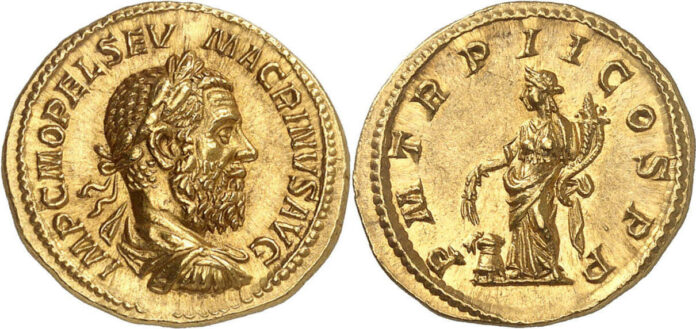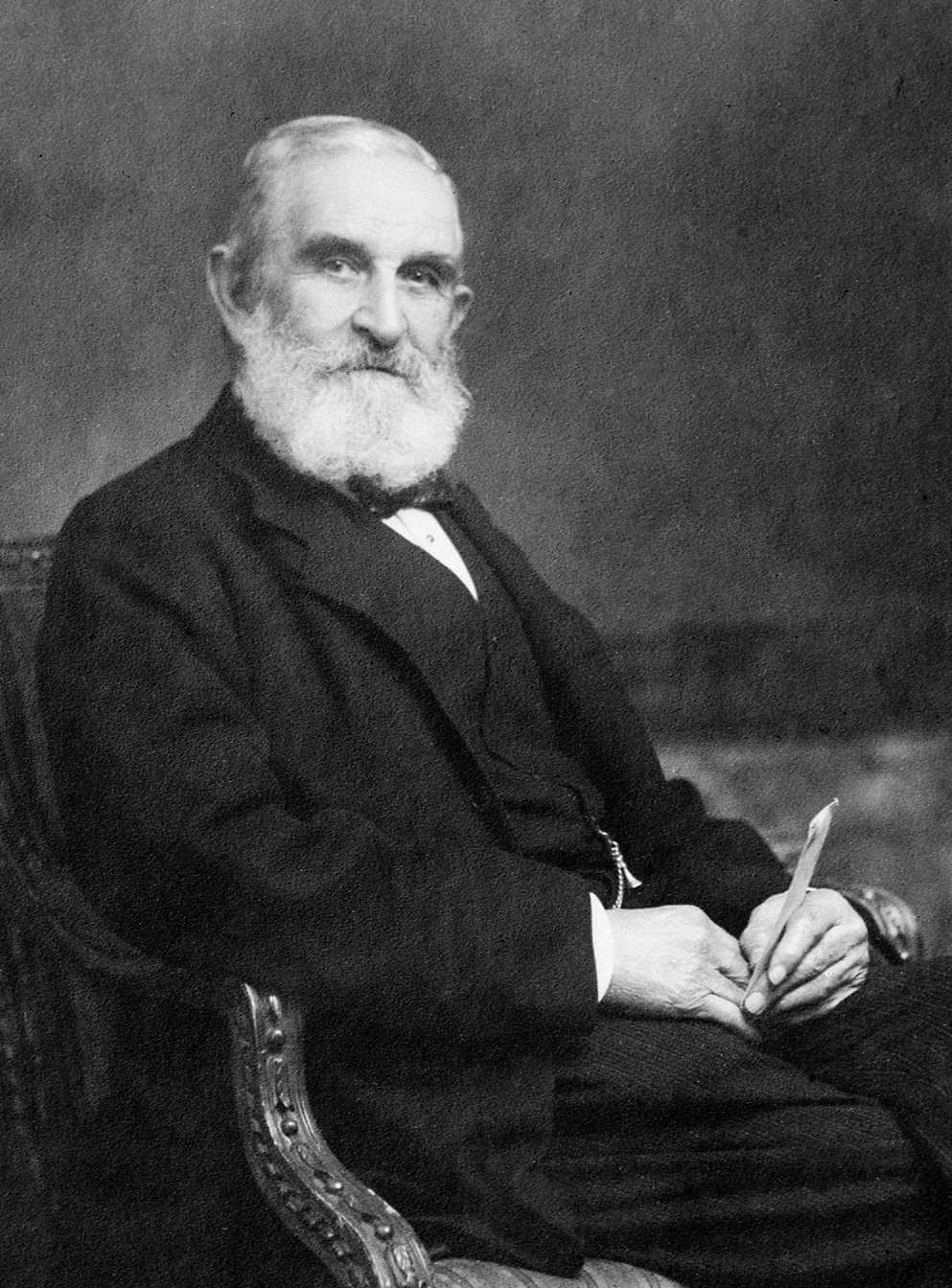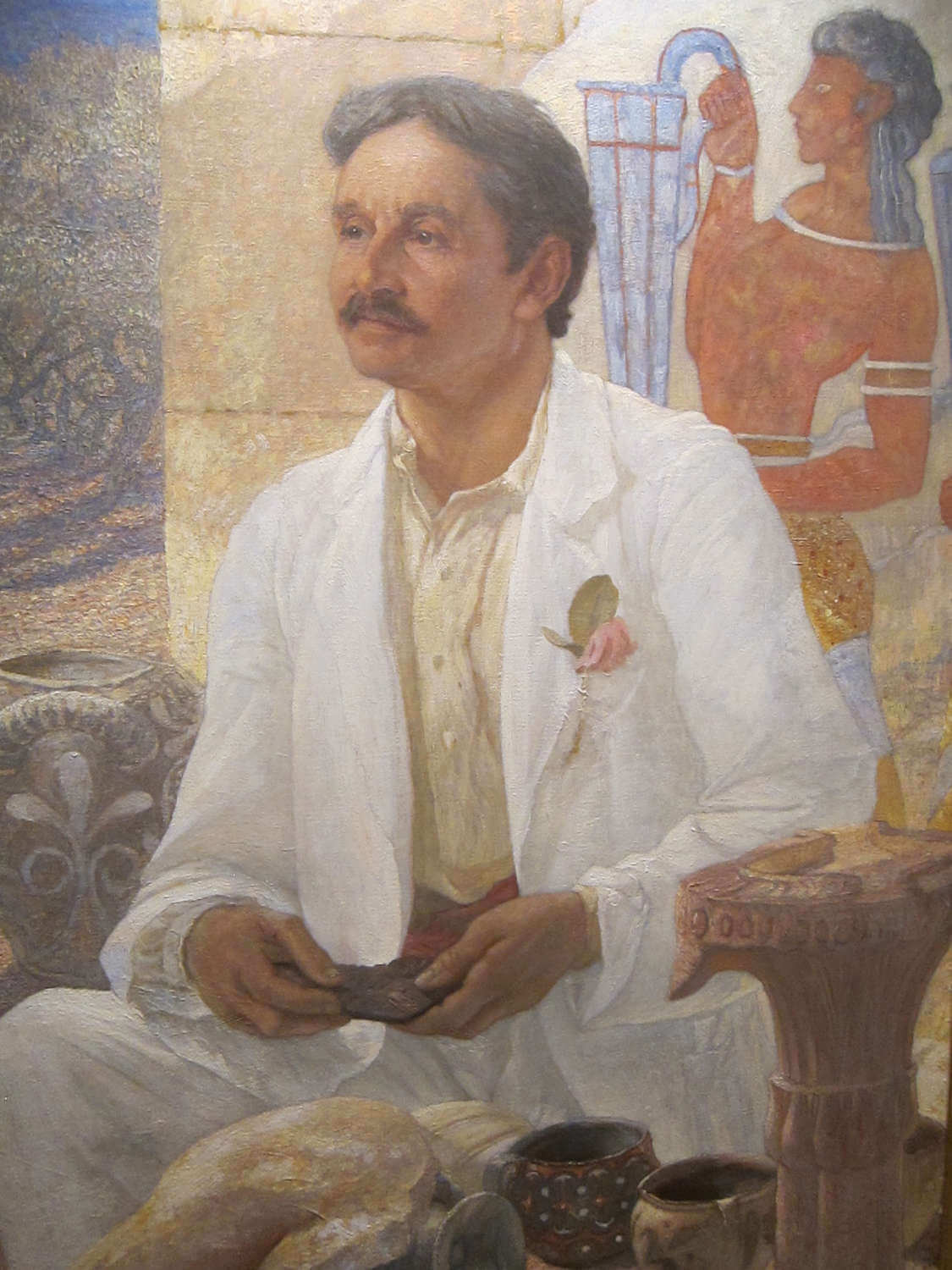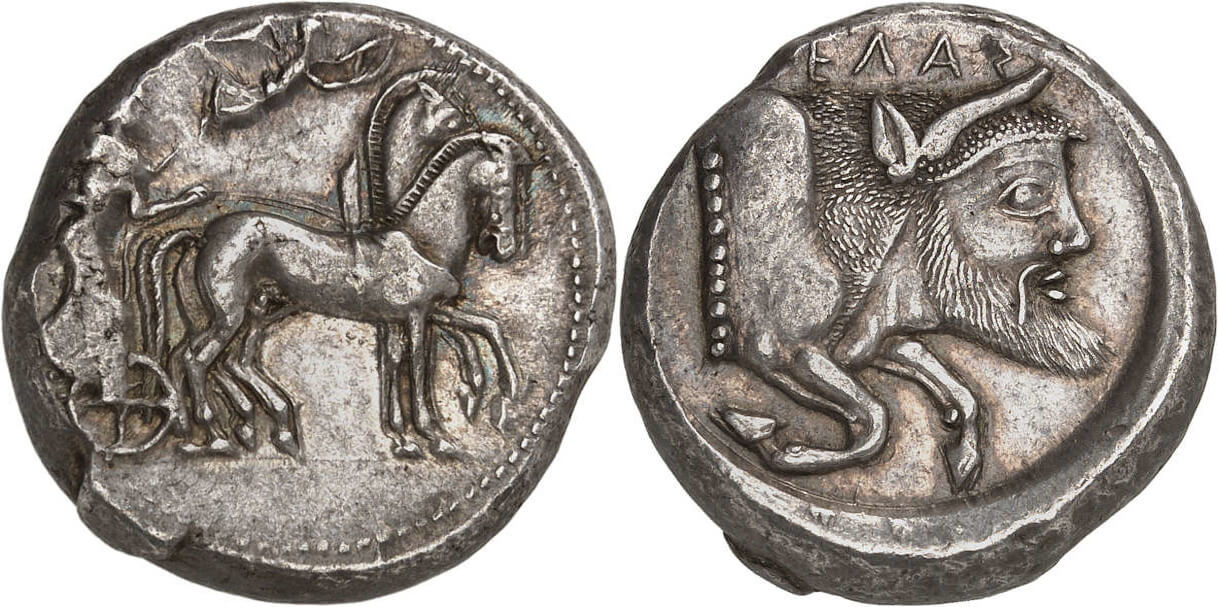On 17th March 2023, the Künker auction house will offer the Roger Wolf Collection. Those who take a look at the accompanying printed catalog will notice that it is designed differently than Künker’s usual catalogs. Regarding many ancient coins, not only the piece itself is depicted but also the image of its first appearance on the market. In this way, Künker wants to enable those who do not own an extensive library of auction catalogs to see for themselves where the piece came from.
There is a good reason for this approach. Provenance research has gained in importance – especially with regard to ancient coins. Many countries of origin have implemented export licensing procedures that apply to cultural goods, including coins, that left the respective country after a specific date. The easiest way to prove that an object was already outside the country before this date is by providing evidence of its provenance. If it was already on sale prior to this date, the auction catalog will clearly identify the coin and specify the date and the venue of the sale.
Prices for coins with provenances that reach far back have increased in recent years. The London-based collector Roger Wolf became aware of this development and decided at some point in his collecting live to refrain from purchasing any specimen that was not of long reaching provenance and to carefully document the pedigrees of his coins.
Ulrich Künker recommends every collector to follow his example: “Keep careful records of where and when you bought a coin. Not only for legal reasons but also for the sake of making sure your collection does not decrease in value. If you want to sell your collection at some point, these records will be worth real money.”
Künker’s Spring Auction Sales contain a particularly extensive offer of coins with outstanding provenances. And this brings us to another topic: thinking of all the people who held a coin in their hands before you did is a great feeling, is it not? And it is even more exciting if you know the names – and the biographies – of some of these owners. This adds another dimension to every coin – regardless of the history of how it was produced and where it circulated. The dimension of the history of its collectors. In this article, we want to illustrate that the stories of these collectors can be extremely fascinating.
It presents the biographies of some of the best-known collectors of ancient coins and shows examples of the coins they collected from Künker’s auctions 382 and 383.
Sir John Evans (1823-1908) / Sir Artur J. Evans (1851-1941)
When this provenance is given for a coin, one must carefully consider which one of the two Evans is meant. After all, the Evans family can almost be referred to as a dynasty of archaeologists and numismatists.
Let us begin with Sir John Evans. He married rich, namely his cousin who inherited a paper mill. This generated a generous income, which enabled him to live his passions – archaeology and numismatics. He mainly collected Roman coins, served as President of the Royal Numismatic Society from 1874 to 1908 and was involved in the excavation of remains of Palaeolithic settlements at Kents Cavern.
His eldest son Arthur inherited not only his father’s fortune but also both passions of his. He became famous for his excavations at Knossos, which were not only headed but also financed by him. At the same time, he built up an extensive collection of coins from Magna Graecia, which he auctioned off at Sotheby’s in 1898 under a pseudonym. He had already sold the largest part of his father’s collection shortly after his death.
But this did not mean that Sir Arthur Evans stopped his collecting activities. When he died, he possessed about 10,000 coins, which he bequeathed to the Ashmolean Museum.
Künker can offer two coins from the collection of the son: No. 33 and No. 2011.
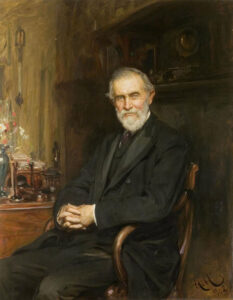
Sir Hermann Weber (1823-1918)
Coin collecting is a popular hobby among doctors – and it always has been. One of them was Sir Hermann David Weber. He was born as the son of an estate manager in the Bavarian town of Holzkirchen and moved to England after completing his medical degree in 1851. There, he was first employed by the German Hospital in London. The institution cared for the about 30,000 German refugees who had been given shelter in London’s East End after the Revolutions of 1848. Most of them lived in miserable conditions and were in need of free medical care. The German Hospital was considered an exemplary clinic. We know this, among other things, because Florence Nightingale decided to complete her training as a nurse in the German town of Kaiserswerth after visiting this very hospital.
Hermann Weber must have been an impressive young doctor with innovative ideas. Given the incredible number of patients suffering from tuberculosis, he developed a course of treatment based on the healing effects of fresh mountain air. This made Weber a pioneer of open-air treatment and Queen Victoria knighted him for this achievement.

In his free time, the ageing Weber occupied himself with numismatics. He assembled an extensive collection of Greek and Roman coins, of which Künker can offer you as many as two Greek coins in the auction 382, namely No. 88 and 138.
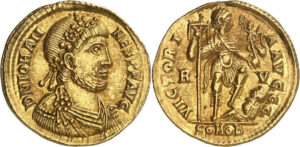
Clarence S. Bement (1843-1923)
His father’s inheritance enabled Clarence S. Bement to build up a sizeable collection of American, Roman and Byzantine coins. The entrepreneur from Philadelphia ran a tool factory by day and relaxed by collecting in the evening. At first, he assembled a large-scale collection of minerals. When he sold it, two freight cars were required to transport the 12,500 items to New York, where they found a home at the Museum of Natural History.
All in all, Bement only collected ancient coins for 15 years. Despite this short amount of time, he succeeded in creating an extraordinary collection. When it was sold by Naville, the items were documented on 132 collotype prints. This is remarkable because only about a handful of outstanding pieces used to be honored with a depiction before a sale in the 1920s. Künker offers you a particularly rare late Roman coin from the Bement Collection.
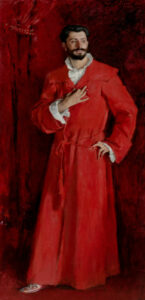
Samuel Jean Pozzi (1846-1918)
His coin collection was probably the least glamorous aspect in the life of this eminent French gynecologist, surgeon and politician, whose medical achievements saved the lives of thousands of women and soldiers. This caused him to be admitted to the French Legion of Honor as early as in 1886, and to be appointed Grand Officer of the French Legion of Honor in 1914.
Pozzi was a typical offspring of the Parisian Belle Epoque. His wife came from a wealthy family. She provided him with the necessary means to shine in the city’s salons and to maintain numerous expensive mistresses, including – perhaps – the great actress Sarah Bernhardt. In 1909, his wife and youngest son left the household. Pozzi was probably not bothered by this. Family was not important to him. He socialized with the most famous artists of his time, including Alexandre Dumas the younger, Marcel Proust and Guy den Maupassant.
From 1898 to 1903, Pozzi represented the Dordogne region in the French Senate, where he was particularly committed to the cause of an educational reform. We also know that he sided with Zola in the Dreyfus affair, opposing the anti-Semitism that prevailed in the army.
Besides coins, Pozzi collected a series of paintings, sculptures and tapestries. He also collected glass objects by Lalique, Tanagra figurines and much more. They formed the extravagant background of his Paris apartment, where he received guests from all over the world.
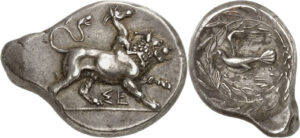
Pozzi’s death was just as extraordinary as his life. He was shot dead by a former patient on 13 June 1918 because the man was convinced Pozzi had made a mistake when treating him, resulting in his impotence. Pozzi did not die in that moment. Under partial anesthesia, he instructed the surgeons operating on him but eventually died during the procedure. Collectors who own a coin from the Pozzi collection have thus a direct connection to the life of the jeunesse dorée of the Parisian Belle Epoque.
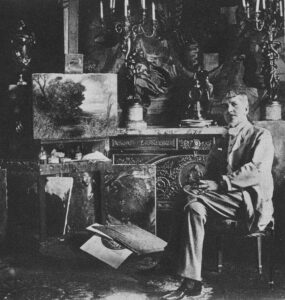
Friedrich von Schennis (1852-1918)
The painter Friedrich von Schennis was from a Swiss merchant family that had settled down in Elberfeld, which was referred to as “German Manchester”. His artistic talents already became apparent when he was just a child and he showed little interest in taking over his father’s company. His family enabled him to study at the Academy of Art in Düsseldorf, where the Düsseldorf School of Painting developed under the leadership of Wilhelm von Schadow and Peter Cornelius. Friedrich von Schennis is considered part of this movement, alongside artists that are as contrasting as Arnold Böcklin, Wilhelm Busch and August Macke.

Friedrich von Schennis is not one of the best-known artists of the Düsseldorf School of Painting. His father’s fortune allowed him to paint for pleasure. His contemporaries regarded him rather as a bohémien, gentleman or dandy. They readily visited his generous household in the Berlin district of Charlottenburg and viewed his extensive collection, which included not only paintings, books and tapestries but also coins. Künker offers you an impressive example in auction 383.
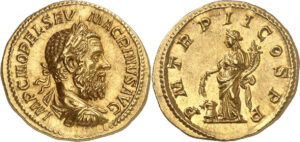
Fréderic Robert Jameson (1861-1942)
You will encounter five coins from the Jameson Collection in auction sale. Lots No. 88, 138, 2011, 2095 and 2111. They were all scholarly published because Jameson himself made sure of this for all his 2,620 Greek and 538 Roman coins.
Robert Jameson was used to meticulous work. His mother’s family owned a bank, whose head office had been moved from Switzerland to Paris. Robert Jameson was a banker himself and saw to his interest in numismatics in his free time. He purchased many coins in person at Paris auction sales; abroad, the coin shops of Rollin & Feuardent and Naville acted on his behalf. Jameson’s extraordinary standards of quality were already well-known during his life time. Therefore, the reference “Ex Jameson Collection” is a special distinction for a coin.
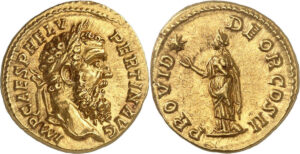
Archer Milton Huntington (1870-1955)
Archer M. Huntington never had to work. The (adopted) stepson of railroad magnate Collis P. Huntington, he inherited a quarter of the Southern Pacific Company, one of the two major railroad networks in the US, when his father died in 1900.
Huntington was obsessed with Hispanic culture und collected everything related to this subject. In 1904, he founded the Hispanic Society of America and built a museum for it in New York, into which the American Numismatic Society was to move later. Huntington was a philanthropist, who bequeathed his collections to the public and spent a large part of his money on charitable causes as he himself did not have children.
His coin collection, which was co-curated by the ANS for decades, was sold in 2011 to help the Hispanic Society of America navigate financially difficult times. Künker is pleased to be in a position to offer two lots from the Huntington Collection: No. 2087 and No. 2089.

Walter Niggeler (1878-1964)
Those who purchase coins from the Niggeler Collection know what this name stands for: Unlike his contemporaries, Niggeler paid particular attention to the quality of his coins, which is why “Ex Niggeler Collection” already indicates that the piece in question is of outstanding quality. He was able to afford it. He came from a wealthy family. He did not take over his father’s textile company but headed the department for energy transformation and distribution at Brown, Boveri & Co. His income went into his collections and his apartment that bursted with art treasures and coin boxes was legendary. Künker is pleased to offer several coins from the Niggeler Collection: No. 138, 364, 530 and 2142.

Giuseppe Mazzini (1883-1961)
Giuseppe Mazzini was an industrial magnate from northern Italy. He was Director of the Turin Savings Bank and of the financial institution called Istituto Mobiliare Italiano. Moreover, he headed the “La Stampa” newspaper as Chairman of the Board and was a consultant for the FIAT car manufacturer. A passionate fencer, he first headed the Italian Fencing Federation and went on to become President of the International Fencing Federation in 1953. In addition, Mazzini was politically active. Mazzini was first a Liberal Democrat, then a Fascist – and yet, this only put an end to his political career after the war.
Numismatists are familiar with Mazzini due the five volumes published by Mario Rotti that present Mazzini’s collection. Mario Ratto purchased a major share of the collection to sell it to his customers. In auction 382, an extremely rare tremissis of Eugenius from the Mazzini Collection is offered.
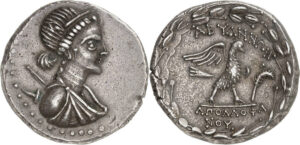
Hans von Aulock (1906-1980)
Collectors of coins from the cities of Asia Minor will certainly be familiar with the name von Aulock. For many years, his collection was the best (and often the only) reference that allowed collectors to identify these coins.
The family of Hans von Aulock was part of the old Silesian nobility. An export merchant and banker, he already moved to South Africa at the age of 24. In 1941 he became head of the Istanbul branch of the Deutsche Orientbank (German Bank of the Orient).
Von Aulock was critical of National Socialism. Therefore, he sought asylum in Turkey when Germany and Turkey broke off diplomatic relations. In 1952, the Dresdner Bank appointed him Director of their Istanbul branch. This did not only enable him to buy coins at auction but also gave him the opportunity to regularly go to the bazaar and look for ancient coins that were waiting to be melted down. Many numismatically valuable coins were preserved for research because Hans von Aulock literally saved them from the melting pot.
In 1980, he and his wife passed away in a car accident. Since Hans von Aulock was one of the first to deal with the coins from Asia Minor of the Roman imperial period, his collection inspired generations of researchers. Künker is pleased to offer you one coin of the von Aulock Collection in auction 383.
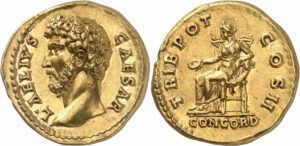
Leo Biaggi de Blasys (1906-1979)
Originally from Switzerland, the family of Leo Biaggi de Blasys made a fortune in the sugar producing industry. After the First World War, their factory became part of the Italian sugar syndicate. This enabled Biaggi to devote himself to his own interests. Starting in the 1930s he lived mostly in Genoa, later in Spain. He was a Delegate of the International Red Cross in Italy from 1943 to 1976. Together with his father Giovanni, a then Swiss consul in Genoa, he helped many people escape. Thanks to the Biaggi family, numerous Jews were able to flee. But some Nazis, too, fled justice with the help of papers that Biaggi had signed. Biaggi assembled an extensive collection of high-quality gold coins, of which some are offered in auctions 382 and 383: No. 465, 549, 561, 2062, 2077, 2085, 2130 and 2156.
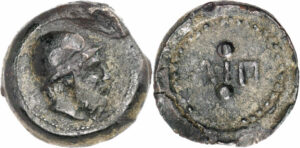
Elvira Clain-Stefanelli (1914-2001)
Female coin collectors are few and far between – which is why we are all the more excited to offer you coins from the collection of Elvira Clain-Stefanelli. Her life was rather adventurous as well.
The daughter of a Bucharest high school teacher, she was one of a few women that had the chance to go to university prior to World War II. There she met her future husband, Vladimir Clain, who was already an aspiring numismatist at the time. Against their parents’ wishes, the two became engaged and married when Vladimir got the chance to work at the Romanian archaeological academy in Rome. Disaster struck when his passport was stolen there one day: with the help of the passport a persecuted man managed to escape from Nazi Germany – and Vladimir was sent to the Buchenwald concentration camp. Elvira voluntarily followed him with their newborn son Alexander.
We do not know how the family escaped from Buchenwald. But Elvira Clain-Stefanellis recounted in a detailed interview that the family had already made their way to Italy before the war ended. The couple was able to make a living by working for the Santamaria coin shop in Rome. But since Vladimir’s place of birth was now part of the Soviet Union, the family run the risk of being deported to Russia. A friendly official made it possible for them to emigrate to the United States. There the couple first worked for Stack’s, then for the Smithsonian Institution, whose coin collection significantly expanded under their leadership. In the years between 1956 and 1982, from 60,000 to 960,000 pieces. Künker offers a specimen from the private collection of Elvira Clain-Stefanelli.
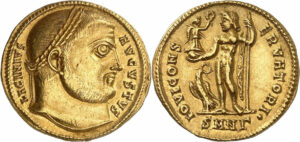
Nelson Bunker Hunt (1926-2014)
Nelson Bunker Hunt is not only famous but downright infamous. He was one of the seven children of oil billionaire H.L. Hunt, whose family life is considered the model of the soap opera Dallas. Nelson was a shrewd businessman, founder and owner of the Titan Resources Corporation, which specialized in oil exploration. His company played a crucial role in the exploitation of Libya’s oil fields.
One may well wonder whether Gaddafi’s nationalization of these oil fields in 1973 is in any way connected to Nelson Bunker Hunt’s decision to manipulate the silver price. Together with his brothers William and Lamar, he acquired vast quantities of silver to propel the prices upwards. The Hunt’s scheme is still described as a worst-case scenario in every economics textbook. On Silver Thursday – 27 March 1980 – the silver price crashed. It left the Hunt brothers with $1.7 billion in debt that they could not pay. To stabilize the financial system, the creditors supported the brothers, allowing for their bankruptcy to unfold in a slow and organized manner. In this process, the comprehensive coin collection of Nelson Hunt was sold, which he had purchased through Bruce McNall. The Hunt affair ended in 1989 in a financial compromise that left Nelson Hunt with enough funds to run a horse farm in retirement – just for fun.
Do you want to learn more about known coin collectors and their collection? Visit our collectors Who is Who!
As a contribution to provenance research David Fanning published the book “Ancient coin in Early American Auctions”.
All coins showed here can be found in the upcoming Künker Spring Auction Sale.
For further information, visit the Künker website.




